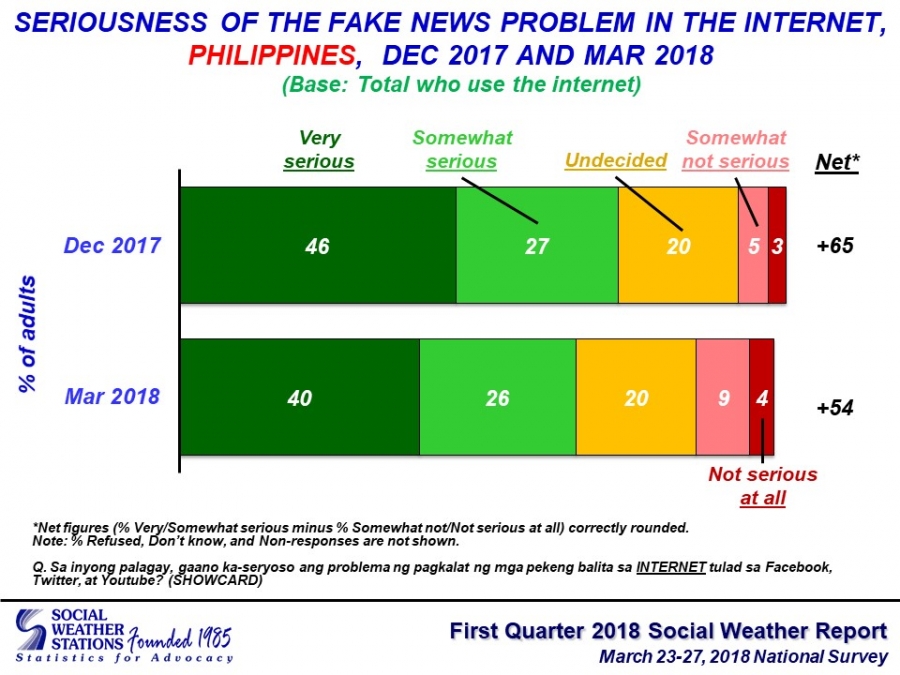A recent survey revealed that 67 percent of Filipinos who use the internet said there is a serious problem with the proliferation of fake news within online sites, while 60 percent expressed grave concern for mass media sites.
Social Weather Stations (SWS) said on Monday that of the 42 percent or at least 44 million Filipinos who use the internet on a daily basis, at least 29 million said in March 2018 that fake news is a serious problem.
Out of this number, 40 percent said that the problem is very serious, while 26 percent said it was somewhat serious. Of the country’s online population, 20 percent were undecided and 13 percent said it is not a serious problem.
However, the number of netizens who consider fake news in the internet as a serious problem dropped, as December 2017 numbers were at 73 percent. Also, the +54 net score for the first quarter of 2018 is eleven points below than the previous +65 score.
SWS said more netizens in Metro Manila and Balance Luzon perceived fake news in the internet as a serious problem at 71 percent, with 68 percent in Visayas and 52 percent in Mindanao
It was also higher in Classes A, B, and C, at 90 percent, compared to 64 percent in Class D and 62 percent in Class E.
More college graduates also believe that fake news is proliferating (76 percent), compared to high school graduates and below (54 to 67 percent).
Fake news in media
The SWS survey also revealed that 60 percent of adult Filipinos believe that the problem of fake news in mass media is serious (29 percent very serious, and 31 percent somewhat serious).
Of the 60 percent, 27 percent were undecided and 13 percent said that it was not serious.
In retrospect, 61 percent said that the current administration is serious when it comes to solving the fake news problem in media (32 percent very serious, 30 percent somewhat serious).
Among the respondents, 31 percent were undecided while eight percent said that it was not serious in battling fake news in mass media.
According to SWS, the survey, which was held from December 8-16, 2017 and March 23-27, 2018, used face-to-face interviews of 1,200 adults, with 300 each from Metro Manila, Balance Luzon, Visayas, and Mindanao.
SWS maintains the sampling error margins of ±3% for national data, and ±6% for each locale. /muf
